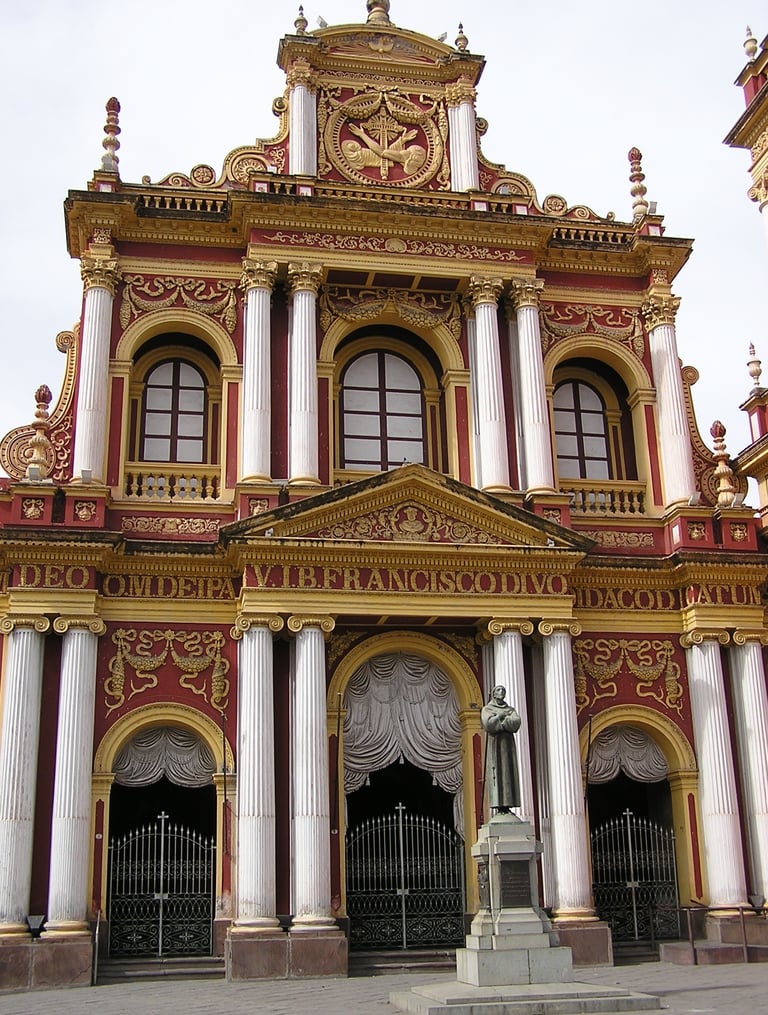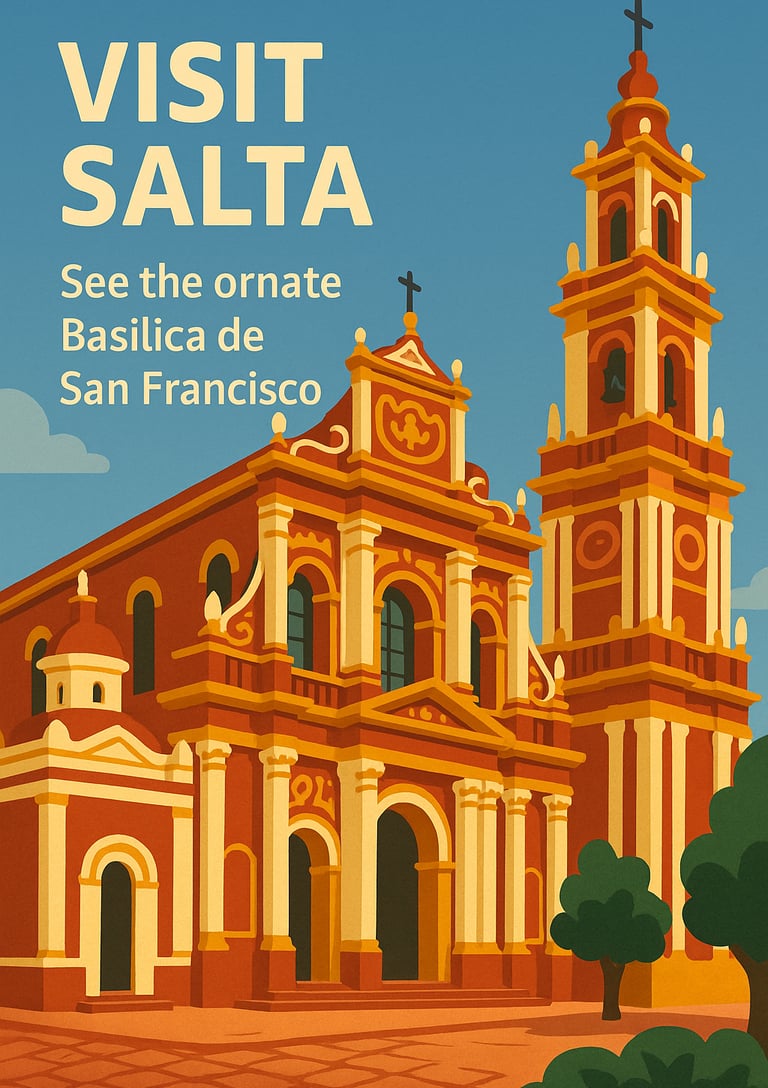Basilica and Convent of San Francisco, Salta – History, Facts & Visitor Guide
Explore Salta’s Basilica and Convent of San Francisco, a red-and-ivory landmark of faith, history, and art. Discover its place in church hierarchy, rich past, and unique treasures.
NORTHERN ARGENTINAHISTORYSALTAARCHITECTURE
Gabriela Arellano
8/8/20253 min read


In the center of Salta, the red-and-ivory tower of the Basilica and Convent of San Francisco stands as a landmark of faith and history. It has survived fires, witnessed battles, and welcomed generations of worshippers.
1. The Hierarchy of Churches: Where a Basilica Stands
In the Catholic Church, the hierarchy follows an order that is both spiritual and symbolic:
Parish church – the everyday home of a local congregation.
Cathedral – the bishop’s seat, the heartbeat of a diocese.
Minor Basilica – a church elevated by the Pope for its historic, artistic, and liturgical significance.
Major Basilica – the four supreme sanctuaries of Rome.
San Francisco in Salta earned its title as a basilica minor in 1992 under Pope John Paul II. It was an official seal on what the people of Salta had long known—that its tower and soul are part of the city’s spiritual skyline.
2. A Story Etched in Fire and Resurrection
The first church (1625) was modest—built of adobe and reeds, fragile as a desert breeze. In 1674, a sturdier wooden structure rose, only to be swallowed by fire in the 18th century.
The present basilica began taking form around 1759 under Fray Vicente Muñoz, weathering not one but two devastating fires and the restless winds of independence. Progress halted and resumed like a long breath, until Father Isidoro Fernández returned from Rome in 1857 with Franciscan reinforcements. Piece by piece, the façade was completed in 1872, and in 1877 the bell tower—tall as a sentinel—crowned the work.
Beneath the floor rest some of Argentina’s historic figures: Francisco de Gurruchaga, founder of the Argentine Navy; Francisco “Pachi” Gorriti, frontier defender; and María Magdalena de Goyechea, mother of General Martín Miguel de Güemes.
And in the belfry hangs the Campana de la Patria, cast from cannons seized in the Battle of Salta (1813). When it tolls, it carries the echo of victory and the prayers of those who fought for freedom.
5. Milestones and Moments
1813: General Manuel Belgrano attended mass here after his triumph at the Battle of Salta.
1941: Declared a National Historic Monument.
1992: Elevated to the rank of Minor Basilica by Pope John Paul II.
6. Why It Stays in the Heart
It is not only the drama of its colors under Salta’s golden afternoon light, nor the layered history in its stones. It is the way faith, art, and memory have intertwined here—how each visitor leaves with a different fragment of its soul. The basilica is both a landmark and a living heartbeat, a place where history is not just preserved but continually breathed into the present.
3. Colors, Faces, and Stone
The façade is a stage set in ox-blood red and ivory white, adorned with garlands, heraldic shields, and sculpted flowers that seem to bloom eternally in stucco. Faux curtains drape the arches, as if the church were about to unveil a sacred play.
Above it all, the bell tower—54 meters high, the tallest in South America—rises tier by tier, each level crowned with its own classical order: Doric, Ionic, Corinthian, and composite. Inside, a single barrel-vaulted nave leads the eye to a coffered dome that floats above like a pale sky.
4. Art, Archives, and Silent Witnesses
The basilica shelters a museum of sacred art, a historic library, and an archive rich with 19th-century musical scores. Among its treasures:
The image of Our Lady of the Snows
A sculpture of Saint Peter of Alcántara, attributed to Alonso Cano
A painting of Saint Francis of Assisi, possibly by Zurbarán


Explore more posts in our Argentine Culture & Architecture category
Know Argentina
Discover diverse insights about Argentina's rich culture.
Connect
stay in the loop
info@knowargentina.com
© 2025. All rights reserved.
